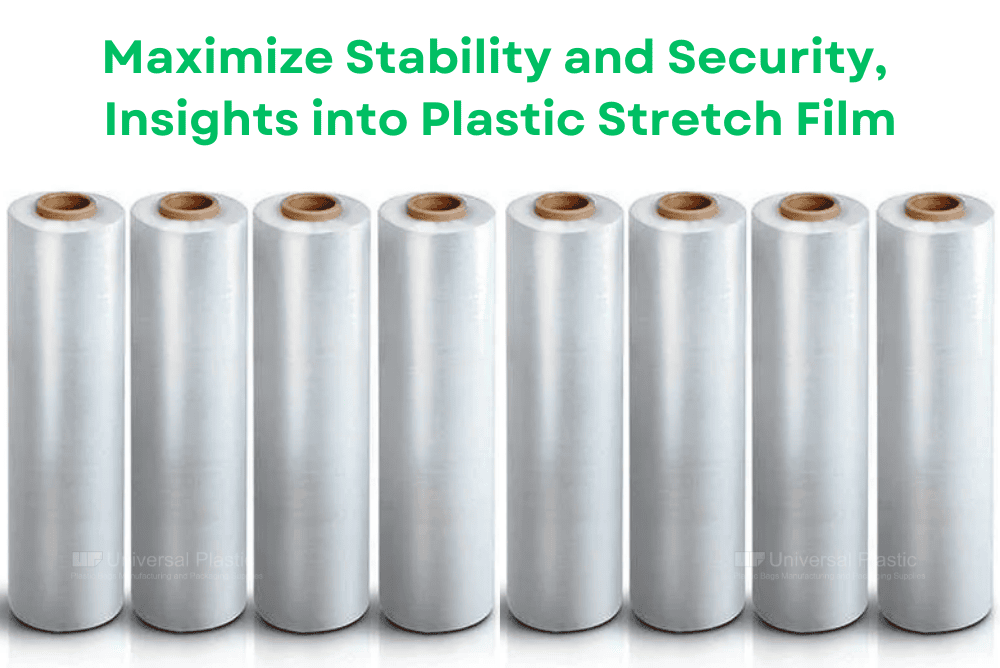
Stretch wrap is one of the most popular packaging materials in warehouses and distribution centers to secure and protect palletized goods. This thin, stretchable plastic film is wrapped around boxes or pallets, to securely hold them together during transit or storage. The importance of stretch wrap film cannot be understated as these packaging materials prevent palletized goods from shifting or falling during transportation and protect them from dust, moisture, and tampering. Would you like to know more about the benefits, types of applications, and factors to consider when applying plastic stretch wrap on goods? If yes, then read the post.
What Accounts for the Wide Popularity of Plastic Stretch Film Wrap
Plastic stretch wraps offer a wide range of benefits for businesses across industries. A few of them include:
- Secure and Protective Wrapping: Plastic stretch film wrap creates a protective barrier against moisture, dust, and contaminants, which helps ensure the goods arrive at their destination clean and intact.
- Improved Stability: Another notable benefit of using a stretch wrap is load stabilization on pallets by holding the products together. This significantly reduces the risk of products from shifting or toppling over during transport.
- Improved Security: Plastic stretch wrap films can be tightly wrapped around products. This helps protect the goods from pilferage and tampering. This also adds a layer of protection around goods, making it difficult for unauthorized individuals to access them.
- Versatility and Adaptability: With plastic stretch film wrap, businesses can effortlessly pack various products, regardless of their size, shape, or weight. It can adapt to the shape of any palletized goods, offering a snug and secure fit. Adding to this, plastic stretch wrap films can be easily applied manually or through semi and fully -automatic wrapping machines.
- Optimized Storage: Stretch film wraps enable efficient stacking of palletized loads. They secure and unite products of the same size, thereby allowing companies to optimize their storage area and streamline their inventory management effectively.
- Cost-Effective Solution: Compared to alternatives like shrink wrap or strapping, plastic stretch wrap is considered as cost-effective packaging, as it requires minimal material to wrap goods. This, in turn, helps businesses to save on their packaging costs.
- Eco-Friendly Option: Some stretch wrap materials, such as low-density polyethylene, are recyclable and eco-friendly. This adds to their popularity as several businesses continuously implement sustainable practices in their activities.
Types of Stretch Films
The following are the main types of stretch films available on the market, each with its unique characteristics and benefits.
- Blown Stretch Films: Named for how they are produced, these wraps are formed by blowing heated resin through a circular die to create a thick, strong film that resists tears. These types are priced at a premium level and are generally used for wrapping irregularly shaped or heavy loads.
- Pre-stretched Films: As the name implies, these types of wraps are made by stretching the film during the production process, resulting in a thinner and more elastic film that is easy to apply. Highly efficient in terms of material use, these wraps reduce waste, while also providing improved load containment.
- Cast Stretch Wraps: These wraps are known to offer excellent clarity, tear resistance, and load stability. They are created by cooling the film as it is extruded onto a casting sheet. Less expensive than blown stretch film, cast stretch wrap has a smooth surface with excellent gloss and strength.
Types of Applications
Stretch film manufacturers suggest the following ways of applying the film on your goods.
- Hand Application: This process is suitable for smaller quantities of products. It involves using a handheld dispenser to manually wrap the stretch film around the product.
- Machine Application: Machine applications are more efficient and safer for workers. They utilize automated stretch wrapping systems to wrap products or pallets. This method is ideal for high-volume operations as it offers consistent quality wrapping and faster and more time-efficient packaging.
Factors to Consider When Applying Stretch Film
When using stretch film, the following factors should be considered to ensure the efficient and effective use of the material.
- Choose the right type and thickness of film to maintain the load's stability. When finalizing the appropriate thickness of film, consider the load's weight and shape.
- Check that the film is compatible with the packaged goods. Different types of stretch films are designed for different applications, such as pallet wrapping, bundling, or unitizing.
- Ensure that the film has sufficient stretchability to serve your applications. Check that the film conforms to the shape of the load and provide a tight wrap.
- Depending on their applications, these packaging materials are broadly classified as hand stretch films and machine stretch films. Choose the appropriate type of film based on the packaging equipment and requirements.
- Check the environmental conditions - temperature, humidity, and exposure to sunlight - during transportation or storage. It is important to invest in the finest quality stretch film that can endure these factors.
Made to secure the bundling of your items, plastic stretch wrap guarantees efficient and seamless inventory management. Being a critical element of the packaging process, these films must be procured from industry leading stretch film manufacturers like Universal Plastics whose films are reinforced with advanced technology and quality assurance. By sourcing these films from reputable stretch film suppliers and manufacturers, you can ensure that your products are adequately protected and the integrity of your packaging is maintained.
